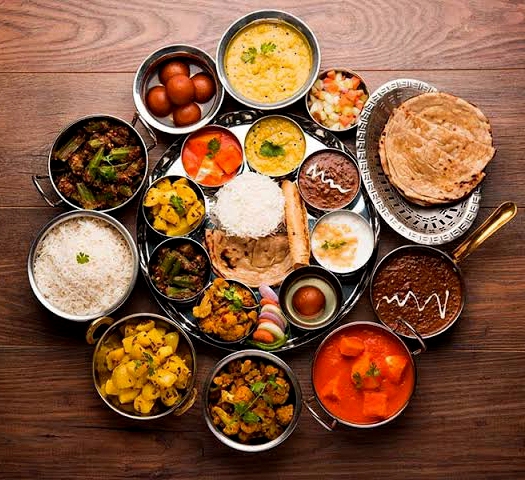
Food is one of the few things that unites people. Flavor conveys tales of culture, history, and common ancestry across national boundaries and political divides. The rich and varied cuisines of India and Pakistan, two nearby countries with distinct identities and a common culinary heritage, are the best examples of this.
We delve into the delectable realms of Indian and Pakistani cuisine in this blog, examining its commonalities, salient distinctions, and distinctive features.
Similar History, Different Tastes
India and Pakistan were one nation prior to 1947. It should come as no surprise that the two cuisines continue to have much in common:
spices, cooking techniques, and a passion for strong, complex flavors. There is a lot of overlap between curries, flatbreads, and biryanis and kebabs. However,
each cuisine has evolved over time in a unique way due to cultural changes, religious customs, and regional influences.
The Vegetarian Richness and Diversity of the Indian Palette
India’s huge geography, regional cultures, and religious customs have all had an impact on the country’s extraordinarily varied culinary landscape.
Vegetarian Tradition:
Vegetarianism is very common in India because of Hindu beliefs. Without any meat, dishes like aloo gobi, chana masala, and paneer butter masala are rich in taste and depth.
Regional Variability:
Indian cuisine varies greatly from one state to the next, ranging from the rich, creamy curries of the North (such as butter chicken) to the coconut-based stews of the South (such as Kerala’s fish moilee).
Use of Spices: Indian cuisine employs a sophisticated fusion of spices, such as turmeric, cumin, coriander, and garam masala, although it’s not always “spicy” in the sense of being hot.
The Taste of Pakistan:
- Meaty, Sturdy, and Festive Although Pakistani cuisine has a foundation with Indian cuisine, it tends to be more meat-heavy due to its Islamic and Mughal influences.
Meat-Centric Dishes:
Mutton, chicken, lamb, and beef are staples in Pakistani cooking. Nihari, karahi, chapli kebab, and haleem are among the traditional foods.
Biryani Battles:
Although both nations assert their dominance in biryani, Pakistani biryani—particularly in Sindhi or Karachi varieties—is frequently richer, spicier, and contains more meat.
Street cuisine Culture:
- The strong, sour flavors of chana chaat, gol gappay, and bun kebabs give Pakistani street cuisine its distinct flair”
- India is known for its rasgulla, jalebi, and gulab jamun.
- Similar delicacies can be found in Pakistan, but there are also distinctive specialties like the colorful, sweet rice dish zarda and the Multan-style sohan halwa.
Hospitality and Tea
A hot cup of chai is a must-have on any visit, and hospitality is revered in both cultures. While Pakistani doodh pati chai is thick, creamy, and frequently richer in flavor,
Indian masala chai is spiced with cardamom, cinnamon, and ginger.
In summary: A Story of Two Tastes
Although they have similar origins, Indian and Pakistani cuisines are like relatives, each with its own unique personality.
The regional variety and vegetarianism of Indian cuisine are breathtaking.
Pakistani food is distinguished by its fiery spiciness and hearty, meaty dishes.
If you’ve never tried either, start learning by going to a neighborhood restaurant, preparing a meal at home, or dining with a local.
After all, a shared meal is frequently the finest way to comprehend a culture.
Leave a Reply